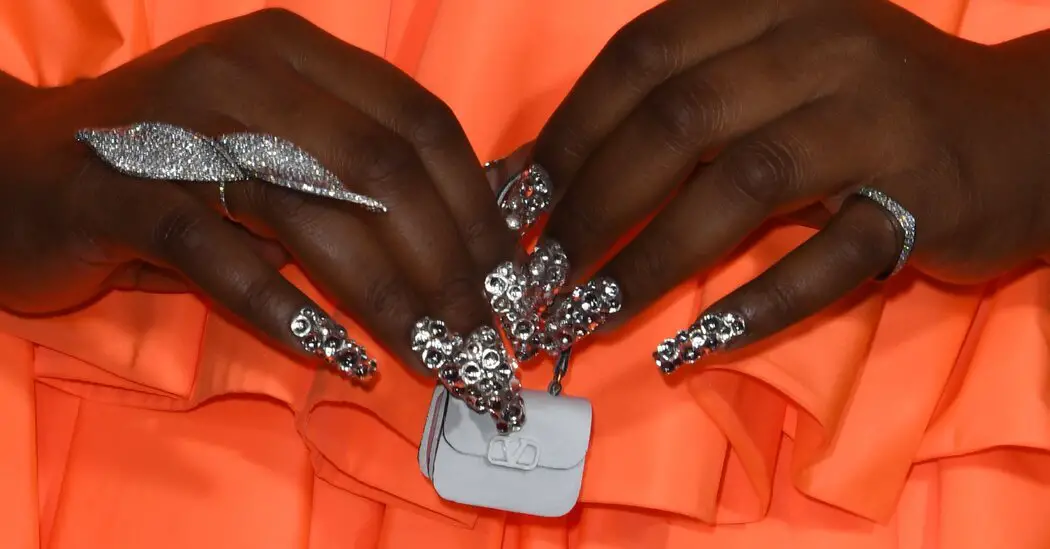Why do women still clutch tiny purses at fancy parties? Don’t they want to drink, dance and wave hello without having to keep a grip on a container that’s often fragile and handle-free? What about shoulder or cross-body bags, reticules pinned to the waist, or a gown or a tux with practical pockets? There must be a better solution. — Maryrica, Charlotte, N.C.
There’s an essential contradiction at the heart of the small-evening-purse question that speaks to our long and fraught history with the accessory.
On the one hand, the evening purse is in many ways a vestigial tail of fashion: an anachronistic relic from another age when women themselves were seen as decorative objects who needed to carry only decorative objects. (The big, strong man held the money, the keys and the reins.) Hence the recent popularity of micro-purses, which embrace the essential silliness of the accessory — that a woman needs only a bag big enough to hold a lipstick and a credit card — and put it on display for all to see.
On the other hand, the bigger the power player, the smaller the purse, suggesting that you have someone else around to carry your stuff. As Jessica Harpley, an assistant curator at the Victoria and Albert Museum in London who worked on the “Bags: Inside Out” exhibition, told me in an email, “Status plays a huge role in the perceived fashionability of tiny, impractical bags, conveying that one is privileged enough to carry around only the bare necessities, that one can afford to spend maximum sums for the most minimum of material.”
Yet, in today’s connected world, evening purses, which have been around since the Regency Era, when pockets — sacks that were often tied over or under skirts — evolved into what were known as “reticules,” still solve a problem more efficiently than any other option.
To wit: where to put your phone.
Women’s evening gowns are rarely conceived with the sort of pockets that are secure enough to hold one’s valuables, given that such pockets risk creating weird bulges as well as distortions in fragile materials (not to mention that phones seem to be getting larger and larger, and thus ruin the lines of even a well-cut tux). In that context, carrying an evening purse is like buying a glass coffee table if you have a patterned rug. It just makes sense.
Acknowledging the need for a bag does not mean, however, that you have to give up the use of a hand. There are plenty of choices for evening accessories beyond the clutch. Look for a style that can be worn around the wrist, like a bracelet, or that comes with a chain shoulder strap that can be unleashed at will and is practical, pretty and relatively unobtrusive.
Also, evening bags can be fun! There’s a reason Van Cleef & Arpels invented the “minaudière,” a small metal rectangle meant to resemble a very glamorous vanity case, in 1933. An evening bag can be a shorthand for glamour, like a great bracelet or pair of earrings, or can even be a souvenir of a special occasion.
Anya Hindmarch, the British handbag doyenne, told me that on the morning of her eldest son’s wedding, she gave her new daughter-in-law “a silk satin clutch bag with her new married initials embroidered on it and with a handwritten message embossed inside saying ‘Welcome to the family.’”
“I hope my great-grandchildren will continue to use this bag,” Ms. Hindmarch said.
Finally, evening bags come with some unexpected benefits. Ms. Hindmarch noted that she used to make bags for Diana, Princess of Wales, that matched her dresses and that had an embroidered “D” on them.
She said the princess called these her “cleavage bags,” because she used them to “protect her modesty as she got out of a car in a low-cut dress.”
Your Style Questions, Answered
Every week on Open Thread, Vanessa will answer a reader’s fashion-related question, which you can send to her anytime via email or Twitter. Questions are edited and condensed.

